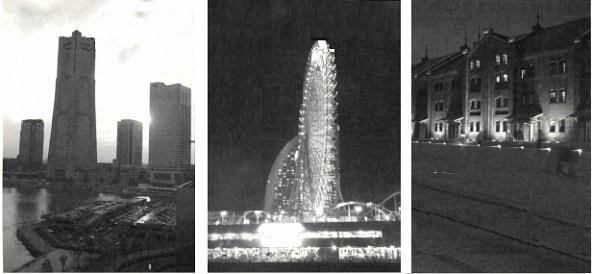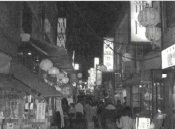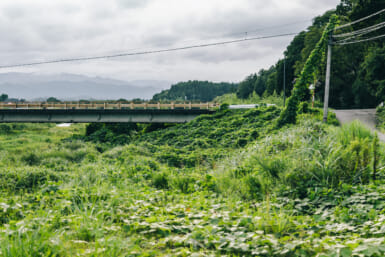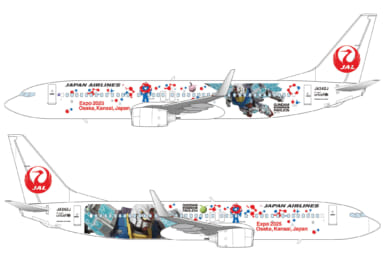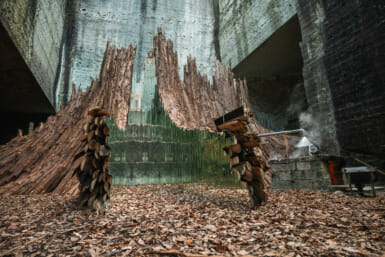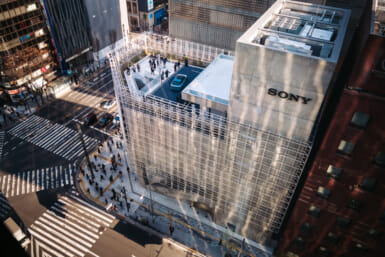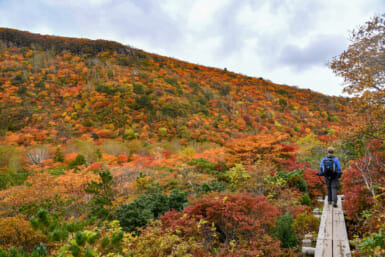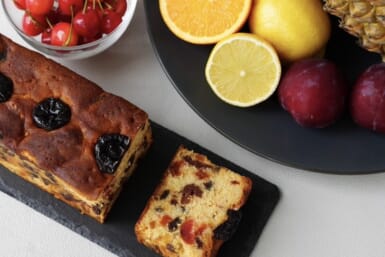by John Domokos
One-hundred and fifty years ago, it was a village of a few hundred houses. Then a certain Commodore sailed in and said he wanted to do business there. Now with 3.4 million inhabitants, Yokohama is Japan’s second largest city, has merged with Tokyo to form the world’s largest urban sprawl and shows no signs of slowing down.
From early next year, the Tokyu Railways Toyoko Line will be extended to make a new link between Minato Mirai, Yokohama Station and Shibuya. The port area has just won a major contract for a huge onsen resort facility to be opened in 2005 and, in 2007, Yokohama’s own twin towers will stand shoulder-to-shoulder with the Landmark Tower.
Yokohama has had its fair share of knocks. The city has been devastated three times-by fire, earthquake and bombs-and more recently has had to deal with the decline of the shipping industry, the surplus of office space across Tokyo and the shift of Tokyo’s airport transportation hub from nearby Haneda to Narita in Chiba.
But Yokohama is no Tokyo commuter outpost. Its inhabitants and governments have shown repeated determination and ingenuity to recover and play a leading role in the emergence of Japan from international isolation to world industrial power. The city gave Japan its first railroad, gas streetlights, newspapers, brewery and, of course, foreigners.
If you are not already thinking of moving in, there are plenty of reasons to head down there for a day out. A Lonely Planet-style one-day itinerary might read something like this:
Get off at Sakuragicho Station (until the new line opens), and hit the tourist information center immediately to your left as you exit the station to pick up a map. Then follow the crowds along the walkway to the Minato Mirai 21 (MM21) complex-you can’t miss it, just head toward the tallest building in Japan.
The Landmark Tower has an observation deck on the 69th floor called “Sky Garden” (entrance costing ¥1,000). The main complex itself has shops, cafes and malls to wander, as well as a concert hall. By the waterside, there is a flea market on weekends and the impressive Maritime Museum and Nippon Maru ship.
If you have the kids with you, there is a small amusement park, and a more grown-up version further around the port that features the world’s second largest Ferris wheel and a handful of other rides that cost up to ¥700 a throw. The combination of the futuristic MM21 skyline and the water all around with industrial silhouettes in the distance makes for an interesting backdrop.
It’s a pleasant stroll-with a refreshing mix of open space and seaside air – from here to the red brick warehouse, one of the few major buildings to survive the Great Kanto Earthquake 80 years ago. It was restored last year and retains much of its original character.
Unfortunately, the inside has been mostly devoted to the Japanese national pastime, shopping. But the top floor has a concert hall, and the place has a cosier feel than your average mall. (If you want one of those, Yokohama Porters is nearby for you.)
From here you can wander back to the port and take a ferry boat over to Motomachi Pier, or if you still have the legs, you can walk along to Yamashita Park and enjoy greenery and a great view of Sakuragicho. Either way, you will eventually end up in lively Chinatown for a hard-earned bowl of ramen, steaming dumplings or something a bit nicer.
Yokohama has more than this, though. There is Motomachi, a fashionable shopping district with more character than your Omotesando or Roppongi Hills. There is also an unusual range of museums from ramen and brews to dons and tattoos. And on a more relaxing note, there is the beautiful Sankei-en-a traditional Japanese garden with several ponds, a tea ceremony house and a 500-year-old Pagoda.
Yokohama continues to attract tourists, residents and investors alike with its energy, facilities, open spaces, international feel and decidedly un-Tokyo-like atmosphere and charm.
USEFUL WEB SITES:
• General information www.city.yokohama.jp
• Minato Mirai 21 www.minatomirai21.com/eng/
• Pacifico Yokohama (Convention Center) www.pacifico.co.jp/english/index.html
• The Landmark Tower www.yokohama-landmark.jp/web/english/
YOKOHAMA TIMELINE
1854 — Commodore Matthew C. Perry arrives with his fleet off the coast of Uraga for the second time, insisting he be allowed to trade. He signs the Japan-U.S. Treaty of Peace and Amity. Yokohama is still a village of a few hundred houses.
1858 — Japan-U.S. Treaty of Amity and Commerce is signed. Treaties with Holland, Russia, Great Britain and France follow shortly after. A foreign residence zone is established.
1859 — The Port of Yokohama is opened and soon becomes a trading hub. Raw silk, tea and sea products are exported, and silk and wool products imported.
1866 — Much of the Japanese and foreign settlements are destroyed by the Great Yokohama Fire. Afterward, the government and foreign representatives cooperate in a convention to improve town planning. The result is the introduction of western-style tile roofs, red brick walls and public parks.
1868 — American William Copeland discovers water perfect for brewing. Together with a German partner, Emile Wiegand, he founds Spring Valley Brewery, making Japan’s first beer. Spring Valley would become the Kirin Beer Corporation in 1907.
1872 — Yokohama is linked to Tokyo by Japan’s first railroad, between Shinbashi and Yokohama, and the country’s first steam locomotive. Experts from U.K. and U.S. later help Japan develop a nationwide rail network. In the same decade, a municipal gas company and newspaper publisher are established. A water service is introduced, and soon after, the Yokohama Public Electric Company installs lights.
Late 19th/early 20th century —The city embarks on a course of industrialization. Osanbashi Pier is completed in 1896, and in 1911 the reclamation work of Shinko Pier.
1923 — The Great Kanto Earthquake hits Yokohama on Sept. 1, with shocks of up to 7.9 on the Richter scale. More than 100,000 people die across Kanto and in Yokohama, almost 86 percent of people are estimated to have lost their homes, mainly to fire. In the aftermath, angry mobs of Japanese troops and civilians round up Koreans in Tokyo and Yokohama and are said to have killed up to 6,000.
1924-1936 — A perbd of remarkably rapid rebuilding and further industrialization. Yamashita Park is completed in 1930, the Tsurumi River estuary is reclaimed in 1931, followed by much of the coastline, which becomes the Keihin Industrial Belt.
1942 — The first Allied bombing raid on Yokohama takes place on Apr. 18. More than 30 more raids follow between then and the final raid on May 29, 1945. On that day, the city is carpet-bombed, with more than 350,000 incendiary bombs in 68 minutes, by 517 B-29 bombers. About 7,000 people die, even though the city has been evacuated.
1945 — After Japan’s surrender on Aug. 15, 90 percent of port facilities and 27 percent of the city are requisitioned by Allied Forces. Many facilities remain under Allied control for years after the official Occupation ends in 1952. As a result, Yokohama falls behind other cities in post-war industrial recovery.
1953 — The first “Minato Matsuri” or “Port Festival” is held, featuring an international costume parade. The Port of Yokohama Promotion Association is established to help bring back business.
1960s and 1970s — Yokohama develops as a city with an international atmosphere as the port brings international trade, and American Qs stop over on their way to Vietnam. The city is a driving force of Japan’s growth, with steel, automobile, oil-refining and chemical industries adding to its port facilities. As Tokyo grows, Yokohama becomes a major commuter base and is eventually engulfed in the urban sprawl.
1983 — Construction of Minato Mirai 21 (MM21) begins. At this time Yokohama is a low-rise city. Development continues to this day, and it is now one of the major high-rise districts in Japan.
1989 — Yokohama Bay Bridge opens.
1993 — Landmark Tower, Japan’s tallest building at 296 meters, is completed in MM21. It has 70 stories and features the world’s fastest elevator (750 meters per minute ) and highest hotel (Yokohama Royal Park Hotel, occupying floors 49 to 70).
2002 — The Block 40 Development Project is announced, centering around twin 61-story residential towers in MM21 containing 1,300 apartments. Completion due for 2007—the towers will be the tallest residential buildings in Japan.
2002 — Yokohama hosts the Soccer World Cup Final at the new Yokohama International Stadium in Shin-Yokohama. The town is taken over by colorful Brazilian fans in a one-day Samba celebration.
2003 — Work is carried out to extend the Tokyu Railways Toyoko Line to connect Shibuya with Minato Mirai, due to open early next year.
MUSEUMS
Yokohama has more than 20 museums to choose from. Here are some of the more interesting ones:
Silk Museum. One of only a few in the world. Shows the process of production, from silk worms to clothes, with displays of beautiful costumes to admire. ¥500 adults, ¥100 children, tel. (045) 641-0841.
The Japan Newspaper Museum. Houses Japan’s oldest known printing blocks and reflects every era of Japanese newspapers, starting with feudal/Meiji-pertod book-style newspapers. Production processes are shown using pictures and replicas of old machines. ¥500 adults, ¥100 children, tel. (045) 661-2040.
Yokohama Curry Museum. A recreation of late 19th century Yokohama, the museum is small on historical curry facts but big on delicious curry to eat—there are seven curry houses, as well as six spice shops and a curry shop. Free admission, tel. (045) 250-0833.
Yokohama Doll Museum. About 10,000 dolls from 138 countries. Also houses the Doll House Shop. ¥300 adults, ¥150 children, tel. (045)671-9361.
Yokohama Kirin Beer Village. The site of the first modern brewery in Japan. You’ll find a museum of the history and technology of brewing, a self-guided tour of the brewery and, last but not least, a tasting room where you are free to sample the goods. Kampai! Free admission, tel. (045) 503-8250.
Shin-Yokohama Ramen Museum. Presents a complete history of the instant noodle, and anything that can possibly be related to it: utensils, old commercials, ramen-themed video games, and the best part—a historical theme park, set in 1950s downtown Tokyo, where you have your fill of ramen and sake from a variety of regions. ¥300 adults, ¥100 children, tel. (045) 471-0503.
Horiyoshi III Tattoo Museum. Yoshihito Nakano—or Horiyoshi III as he is known in skin-and-ink circles—opened a museum a couple of years ago dedicated to all things tattoo. Thirty-plus years as Japan’s top horishi tattoo artist (doing it by hand) has seen Yoshihito amass a huge collection of art and tools from Japan and abroad. A must-see—even if you don’t like needles. Free admission, tel. (045) 323-1073.
You can also visit the Iwasaki Museum (fashion), Yamate Museum, Tin Toy Museum, Yokohama Streetcar Museum, Motion Display Museum, NYK Maritime Museum, Kanagawa Prefectural Museum of Cultural History, Bicycle Museum, Yokohama Museum of Art, Mitsubishi Minato Mirai Industrial Museum, Sogo Museum of Art, Yokohama History Museum, Electric Power Historical Museum and Kanazawa Bunko Museum.
— Compiled by James Mulligan —
CHINATOWN AT A GLANCE
Once Yokohama opened its ports to foreign trade, Chinatown quickly followed—becoming the favored residence for the Chinese traders arriving in droves. Today, the number of residents is dwindling, although the business spirit of the traders lives on through the restaurant and shop owners.
Standing at the north, south, east and west edges of Yokohama Chinatown are the beautiful Pairos (Chinatown gates) swathed in gold, blue and red. These mark the entrance to this delightful mini-city. Step inside and there are more than 500 restaurants and shops packed tightly together. Chinese grocery markets selling exotic spices, ingredients and medicines, and handicraft stores stand wedged between the bountiful supply of Chinese restaurants.
Food-wise, there is almost too much choice when deciding where to eat. You’ll soon see where are the popular restaurants—the snaking queues outside give them away.
For those who don’t possess the patience for lining up, there are plenty of other excellent places. Here are four of the best:
Heichinro. 149 Yamashitacho, Naka-ku, tel. (045) 681-3001, JR Ishikawacho Station, ¥4,000 per person.
Eikaro. 146 Yamashitacho, Naka-ku, tel. (045) 681-0885, JR Ishikawacho Station, ¥3,500 per person.
Fuen. 136 Yamashitacho, Naka-ku, tel. (045) 681- 8957, JR Ishikawacho Station, ¥5,000 per person.
Shatenkinigouten. Ri Bldg. 1F 188 Yamashitacho, Naka-ku, tel. (045) 664-4305, JR Ishikawacho Station, ¥3,500 per person.

